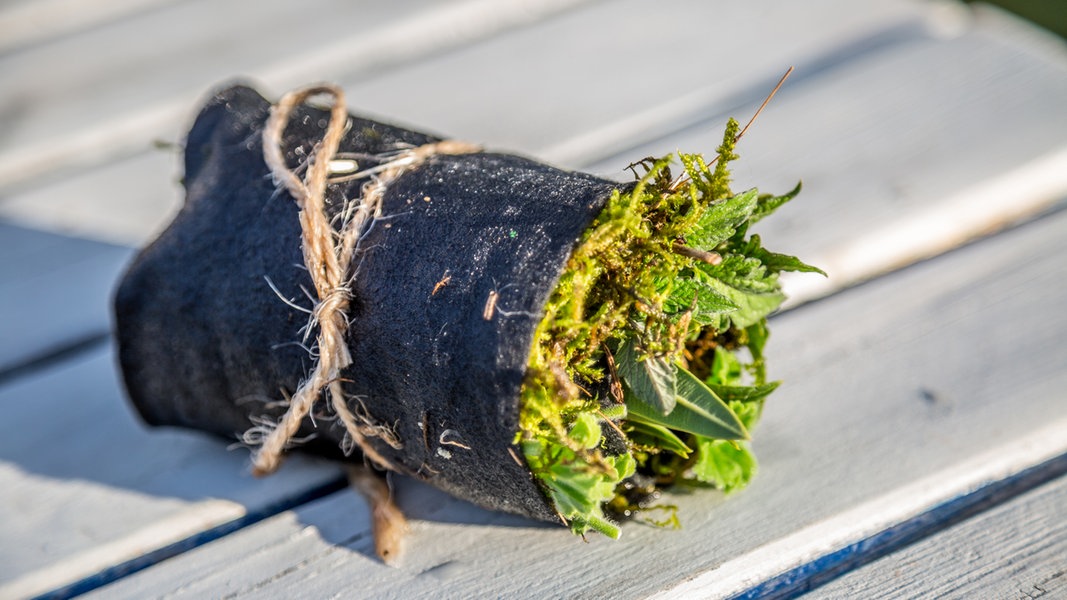Status: 08/02/2023 12:39 p.m
Hydrangea, geranium or herbs: many plants from the garden can be easily propagated with cuttings in summer. But especially at high temperatures, they need enough water.
Most plants bloom profusely and grow magnificently in summer – an ideal time to propagate your favorite plants with cuttings. This is relatively easy for many plants if you follow a few rules.
Multiply hydrangeas, lavender and co
Many plants can be propagated by cuttings. A selection:
The following utensils are needed for propagation:
small flower pots clean secateurs a clear plastic bag or mini greenhouse nutrient poor potting soil several cuttings
This is how the cuttings are cut
Cut a 10 to 15 centimeter long piece from a one-year-old shoot, or shorten the cut shoot to this length. Depending on the plant species, the length may vary. It is important that the cutting has two nodes (nodes). Always cut directly below a scion knot. Be sure to use a clean, sharp knife to cut the stem.
Remove flowers and leaves
Cut off the lower leaves on the cuttings so that they do not rot in the ground later. If the cutting has many large leaves, they should be cut in half to reduce evaporation. If there are flowers, remove them as well.
Fill the potting soil in a flower pot, place the cutting in it and water it lightly. If you don’t have potting soil, you can mix normal potting soil with sand. It is important that the substrate is low in nutrients and largely germ-free. If you have very small cuttings, you can buy a so-called multi-pot plate in stores. It offers space for many cuttings.
High temperatures and regular watering important
Either place the flower pot in a mini greenhouse or make one yourself: simply place the pot with the planted cuttings in a transparent plastic bag and seal it. Place the cuttings in a light, but protected from the sun place for two to three weeks. The temperatures should be between 20 and 30 degrees.
Further information
If you want to grow vegetables, you need a mini greenhouse. You can make it yourself with simple tools. more
Keep the soil moist but not too wet and ventilate the mini greenhouse regularly to prevent mold growth. As soon as new leaves develop, the experiment has worked and the plastic bag or the roof of the greenhouse can be removed. The young plant can now be repotted in a container with normal potting soil.
Uncomplicated in summer: multiply cuttings without soil
If you want to do without potting soil or if you cannot supply the cuttings with water for a few days, there are two other methods of rearing.
Variant 1: The cuttings roll made of moss
The cutting roll is a good alternative to traditional potting soil.
Lay wet moss on a piece of garden fleece cut to size and place one or more cuttings in it. Roll the whole thing up and secure with a ribbon. Do not tie the package too tightly so that the moss and cuttings can absorb the water well. Place the cutting roll upright in a bowl filled with water in a shady place. By the time the cuttings grow out of the top, they are usually rooted and ready to be potted.
Variant 2: The decorative styrofoam boat
The water lily leaf is not only an eye-catcher in the garden, but also useful for plant breeding.
Another possibility is to make a boat out of styrofoam. So that the white material does not stand out in the garden, you can paint the styrofoam plate with waterproof paint and cut it in the shape of a water lily leaf, for example. Then drill a few holes in the plate and insert the cuttings so that part of the stalk peeks out at the bottom. Place the lily pad on a garden pond or in a bowl of water. So the cuttings are supplied with water, have a good climate and a constant temperature. When the plantlets are rooted, it is advisable to break up the styrofoam so that the plant and root are not damaged.
Further information
The end of September is a good time to propagate herbs. It is important to use fresh shoots if possible. more
Tomato plants can be easily propagated by cuttings. The so-called miserliness are suitable for this. more
Hedge trimming in autumn is the ideal time to cut cuttings – an easy method of propagation. more
This topic in the program:
NDR 1 Wave North | The tender ones in the garden | 08/12/2022 | 5:05 a.m
